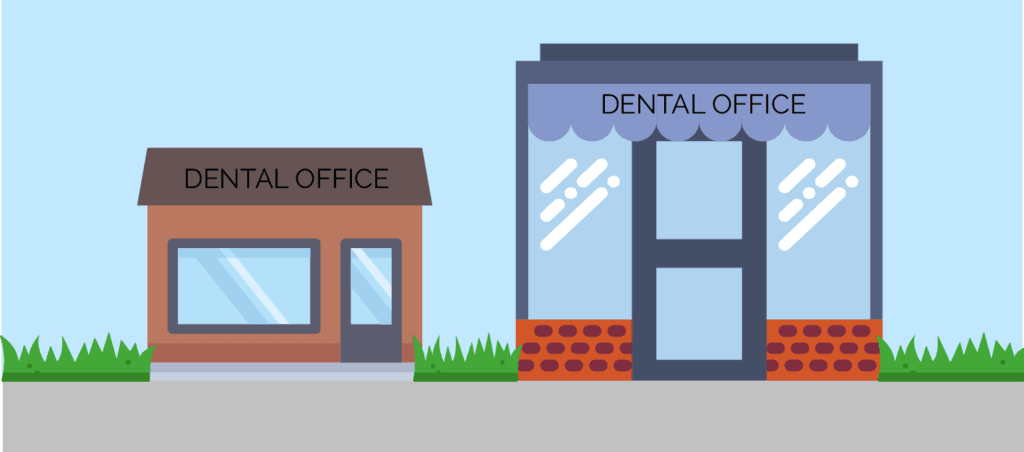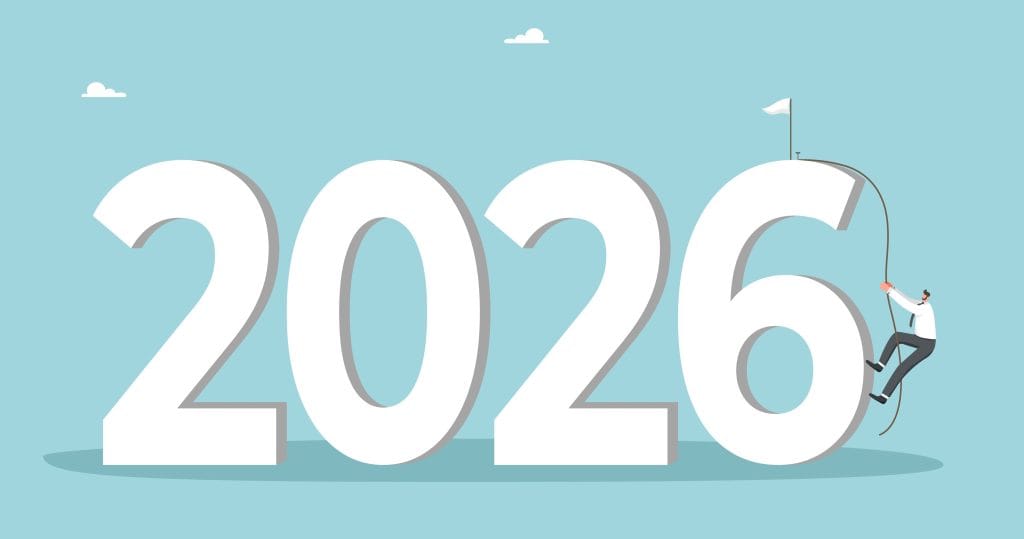Last updated on November 20th, 2025 at 01:10 am
Last updated on November 4th, 2025 at 03:36 pm
I often see questions regarding when a good time to expand or move is. It’s a good idea to weigh this thoroughly before you decide. I’ve seen quite a few doctors choose the “move” option at the wrong time or for the wrong reasons only to regret it later.
The plus is: right now you have an office. It’s built out and it works. You know what you’ve got.
Whether you should stay or go is not always an easy question to answer, and to a large degree depends on your circumstances.
While everyone’s individual situation is different, I thought I might paint a sample scenario along with some options to help you along the way. Here goes:
Let’s say your office is open four days a week and you’re “maxed out” in your current space. You’ve done whatever you can to make your schedule as efficient as possible between your DAs and scheduling policy. You’re the model of efficiency. Hygiene is packed and it’s hard to find an opening. There’s no way to fit any more patients into the schedule—you’re out of chair time.
Options:
- You could add more space with a move or with potential expansion into adjoining space in your building (if available).
- You could expand hours, add more staff, associate(s), etc.
Make sure you are financially prepared
Financial commitments associated with Option “A” above can be considerable with build out, new chairs, etc. And a key factor here is affordability—i.e. can you afford the move?
Financial commitments for Option “B” are far less in the short-term and if it works, can be more profitable.
Let’s say you’re running from 8AM to 5PM four days a week (or something similar). Well, you’re paying for your office every day whether you are there or not. Why not use the space? If you were to open up the hours and add Friday and Saturday, you could potentially add up to 35 hours a week of chair time—for all intents and purposes an additional full-time office. It also allows you to cater to patients who want super early (or late or Saturday) appointments.
You could ramp up part-time by adding a few mornings or afternoons to begin with and expand from there.
As far as the owner/doctor goes, he or she could change their schedule however they like—start at 7AM and go to 3PM Monday through Thursday with an associate picking up the evenings, Fridays and Saturday. Or the owner/doctor might work an evening or two. You can do whatever you like.
So, that’s the “pros” of this model. What are the “cons?” Well at full volume, you’ve essentially doubled your staff (hygienists, associates, etc.). It requires a solid management skill-set to avoid problems. You’ve essentially opened another location—it just happens to be in your office and that can be a “pro” as you only have one rent, one practice loan, etc. I discuss the pros and cons of adding additional hours in another article titled Should You Be Open on Evenings or Saturdays.
With a move, it comes back in the end to finances. Ideally, we like to see rent expenses stay in the 4-5% range of your overhead (Our COO, Jeff Blumberg, wrote a series on the subject of managing your overhead—check out the first of the series here!) So, if you’re collecting $60,000 a month, you’d want your rent in the $2,400 to $3,000 range. If you’re looking at a move where your rent is going to be $5,500, you may have problems—you’ve cranked your rent up by $2-$3,000 a month ON TOP of the loans, leases, etc. associated with build out and new equipment.
Things to take into account
Be wary of falling into the thinking that a move will “solve” production problems. It usually doesn’t. It’s easy to see why someone might think, “I know this new beautiful office will attract more patients,” or something of the sort, but it usually doesn’t work out that way. So, if you’re moving, do it for the right reasons!
At minimum, prior to considering a move, I would at least:
- Make sure I’ve “maxed out” my current space within my current full-time hours. Schedule is efficient, etc.
- Consider the possibility of expanding hours to increase productivity with a minimal hit to overhead.
- Calculate as close as possible what the exact financial impact of a move would be—i.e. how it would affect your overhead and profitability. I wouldn’t “thumbnail” this. I would really look at this in-depth. And I’d look at how these new expenses would affect me based off of the numbers I was doing NOW. Not the potential wonderful future numbers that I would hope to do in a new location. You can only pay real bills with real money. So, if you do this, keep it as close to real as possible. Once you have a look at the numbers, you’ll see the real-life impact a move might have and can factor this into your decision.
There are exceptions, however
Now, with all of this, there are exceptions to what I covered above. Here are a few:
1. You might need to move—i.e. the lease isn’t being renewed for whatever reason.
Your choices are limited here…time to move!
2. You’re in a space that has absolutely zero potential for expansion.
Let’s say you’re in a two-chair office with no possibility of adding space. Two chairs limit a GP badly—especially if you’re trying to build a hygiene program. If expansion is part of your future, then a move might be a good idea. But again, I wouldn’t do it if you’re not all that productive yet. If you’re in a smaller space with three or four chairs, you have more potential, but this all comes back to space planning and allocation to one degree or another. With older offices you might find that administrative space is virtually non-existent. I’ve seen this go to extremes where you have a six-chair office and a front desk that seats one person! Again, this can be worked around but might become problematic. Assuming the finances work, a move might not be a terrible idea if you want to expand and your space becomes a liability, which is difficult if not impossible to handle.
3. You find a “sweet” deal with ownership possibilities.
Let’s say you find a space that’s available for sale and it’s a good deal. Well, it might be something you want to jump on. You’ll have no trouble with the landlord (as it will be you…) and you’ll own the space. This is one of those potential “game-changers.” For example, let’s say you’re productive, but not “maxed out.” You’re near the end of your lease and a great deal for purchasing a building comes up. Well, if the finances work, this might be something you want to jump on. But do make sure it works financially. If you’re collecting $60,000 a month and the costs on the building will run at $10,000 per month, it’s probably a bad move.
the space. This is one of those potential “game-changers.” For example, let’s say you’re productive, but not “maxed out.” You’re near the end of your lease and a great deal for purchasing a building comes up. Well, if the finances work, this might be something you want to jump on. But do make sure it works financially. If you’re collecting $60,000 a month and the costs on the building will run at $10,000 per month, it’s probably a bad move.
Here’s the bottom line
Moving to a new location is a big deal.
Beyond the basic consideration of being able to afford your new space (and still pay your bills at home, etc.), any number of circumstances factor into the decision. You might have big plans and your small space just doesn’t fit. You might be in a space sharing situation where a move would be in your best interest.
There’s also the reality of where you practice, which can affect all of this. Finding space for a new dental office in Manhattan, for example, has an entirely different set of challenges than, say, finding a new location in Omaha, Nebraska. So, this plays a part as well.
There’s also timing. Maybe a move is something you should do—but not right now.
In any event, and regardless of whether you plan to move now, in the future, or never, your first step would be to max out what you have. Make your office as efficient and productive as possible, which is something I’d recommend to everyone! If you’d like help with this, contact me here at sabrib@mgeonline.com and I’d be glad to point you in the right direction. Hope this helps!




No Comments
Be the first to start a conversation